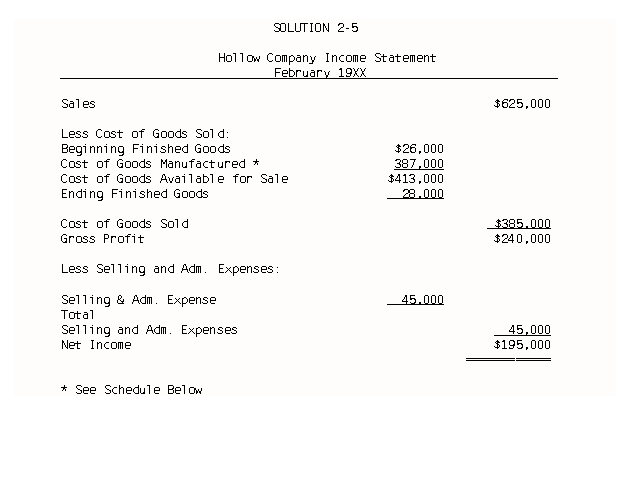
Chapter 2 Solutions
James R. Martin, Ph.D., CMA
Professor Emeritus, University of South Florida
Chapter 2 | MAAW's Textbook Table of Contents
Solution 2-1
1. d
2. d
3. d
4. d
5. e
6. b
Solution 2-2
1. c
2. e
3. d
4. b
5. f
6. d
Solution 2-3
1. c
2. d
3. a
4. c
5. e
6. b
7.
d
8. b
9. a
10. e
11. d
12. b
13. c
14. b
15. a
16. d
Solution 2-4
1. c
2. c and d
3. b
4. a
5. b
6. d
7. a
8. c and d
9. a
10. c
11. b
12. d
Solution 2-5

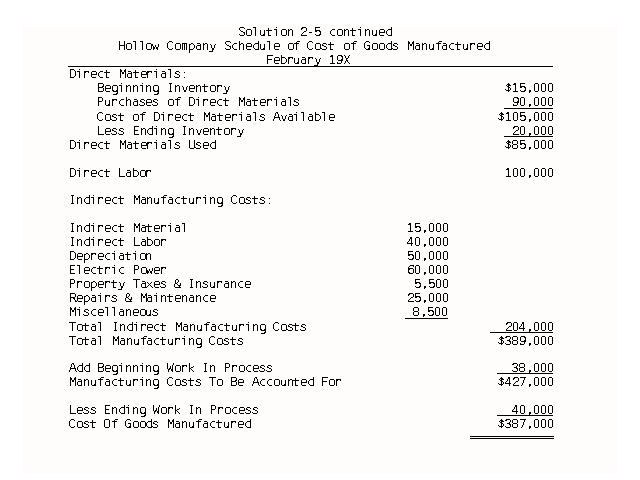
Solution 2-6
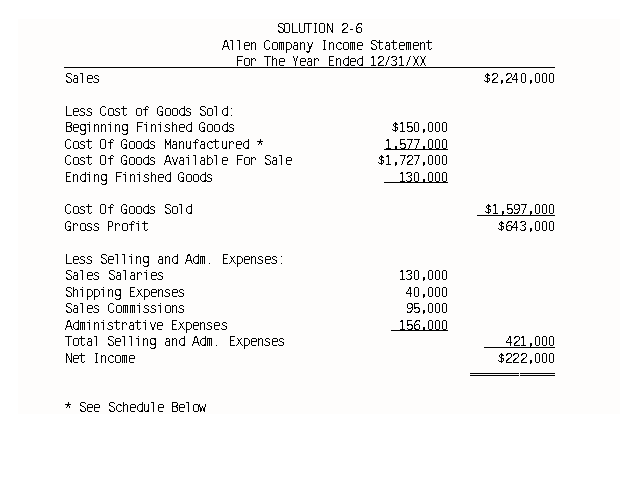
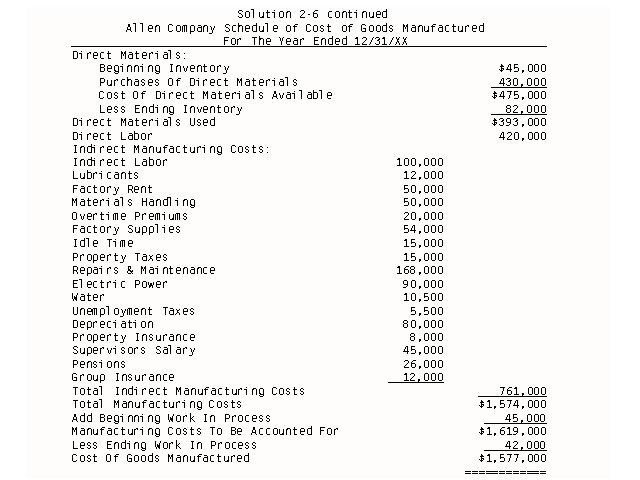
Solution 2-7
Part I
1. 30 + 200 - 15 = 215
2. Supervisors salary + overtime + payroll taxes + electric power + rent + repair + property taxes + indirect labor + unemployment taxes + health insurance + depreciation + property insurance = 50 + 6 + 8 + 10 + 40 + 8 + 4 + 40 + 6 + 4 + 60 + 5 = 241
3. 215 + 80 + 241 = 536
4. 536 + 20 - 10 = 546
5. Shipping + other adm. + payroll taxes + electric power + sales salaries + property taxes + unemployment taxes + health insurance + depreciation + property insurance + sales commissions = 4 + 60 + 4 + 2 + 30 + 3 + 2 + 2 + 20 + 3 + 50 = 180
6. 546 + 20 - 25 = 541
7. 1,000 - 541 = 459
8. 459 - 180 = 279
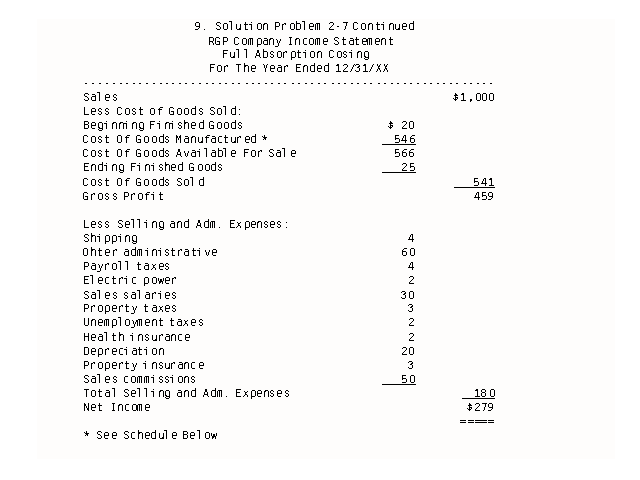
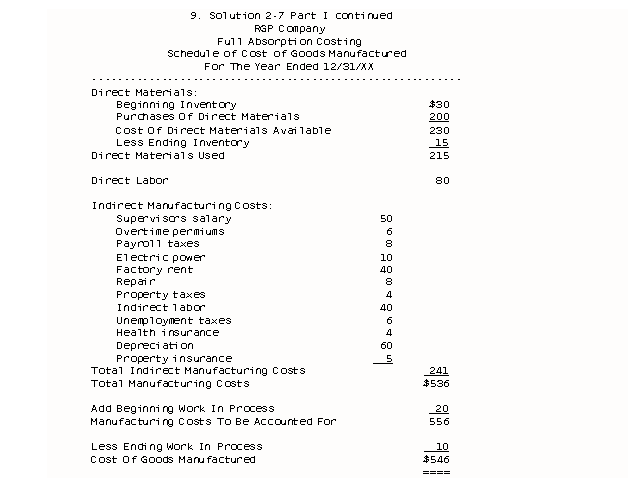
Solution 2-7 Part II
1. 30 + 200 - 15 = 215
2. 31.6 (See income statement below.)
3. 215 + 80 + 31.6 = 326.6
4. 326.6 + 3 - 1.5 = 328.1
5. Shipping + Health insurance + Sales commissions = 4 + .8 + 50 = 54.8
6. 328.1 + 3 - 3.75 = 327.35
7. 1,000 - 327.35 = 672.65
8. 672.65 - 54.8 = 617.85
9.) 617.85 - 209.4 - 125.2 = 283.25
10. Reconcilation:
Fixed costs in the inventory under full absorption costing:
BWIP
17.00
BFG 17.00
34.00
EWIP 8.50
EFG 21.25 29.75
Difference
in NI $4.25
(283.25 - 279
= 4.25)
The inventory decreased which indicates that more products were sold than produced. In other words, some of the units produced in a prior period were sold as well as all of the units produced during the current period. This means that $4.25 of the prior period fixed costs was charged to cost of goods sold in absorption costing along with all of the current period's fixed costs. Only the current period's fixed costs are charged to expense in direct costing.
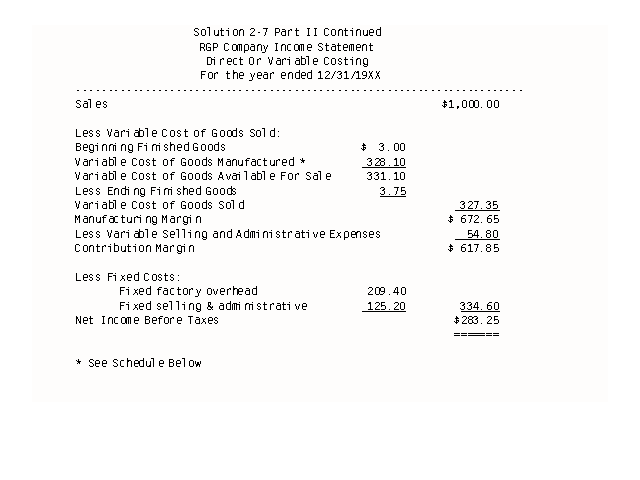
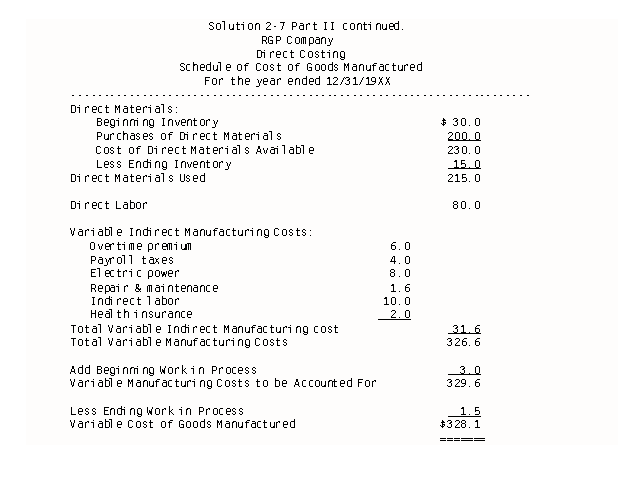
Solution 2-8
1. The cost of direct materials used = 50 + 600 - 80 = 570
2. The cost of goods manufactured for absorption costing = 1,200 + 4,800 + 160 - 200 = 5,960
3. The cost of goods manufactured for direct costing = 1,200 + (1/4)(160) - (1/4)(200) = 1,190
4. COGS for absorption costing = 5,960 + 400 - 480 = 5,880
5. COGS for direct costing = 1,190 + (1/4)(400) - (1/4)(480) = 1,170
6. Gross profit = 10,000 - 5,880 = 4,120
7. Contribution margin = 10,000 - 1,170 - 600 = 8,230
8. NI for absorption costing = 4,120 - 1,600 = 2,520
9. NI for direct costing = 8,230 - 5,800 = 2,430
10. The difference of 2,520 - 2,430 = $90 results because an additional $90 of fixed cost is capitalized in the inventory under absorption costing while all fixed costs are expensed under direct costing.
Fixed cost under absorption costing:
In Beginning inventories
BWIP (3/4)(160) = 120
BFG (3/4)(400) = 300
420
In Ending inventories
EWIP (3/4)(200 ) = 150
EFG (3/4)(480) = 360
510 =
$90 Increase